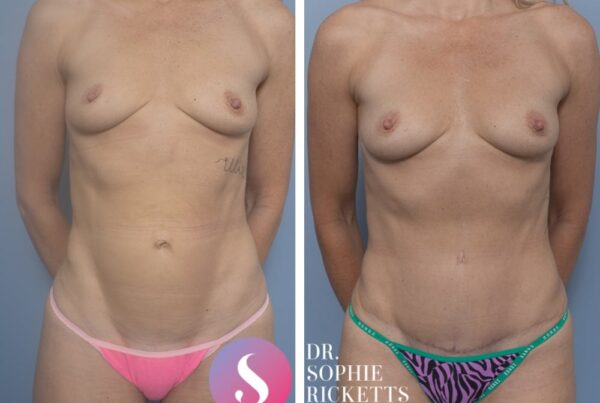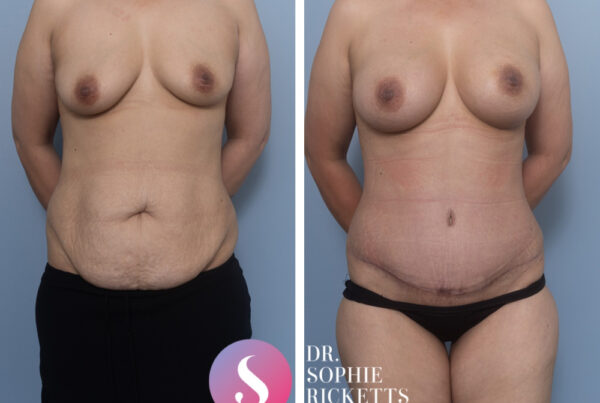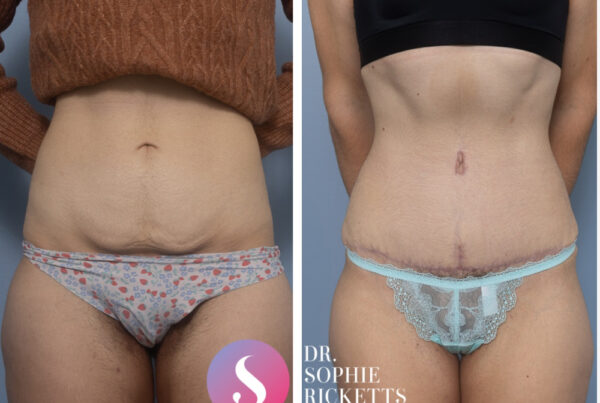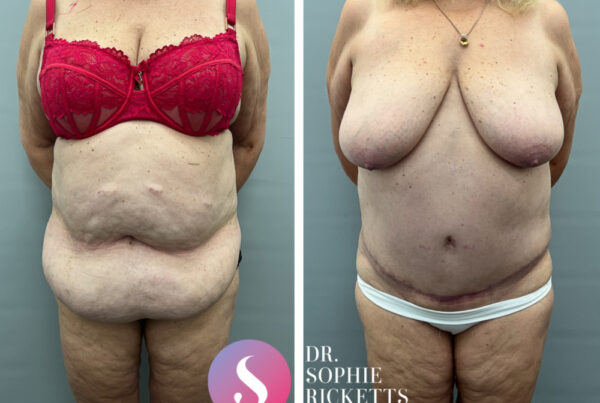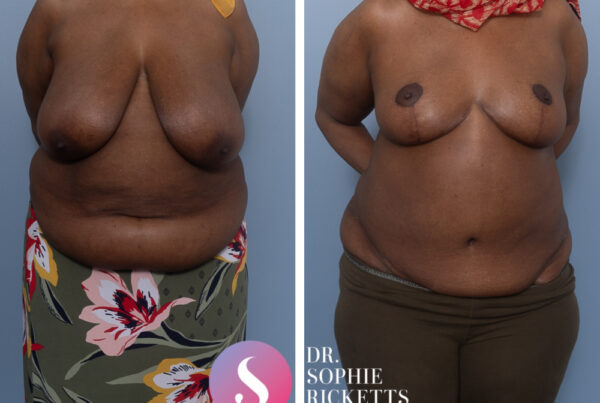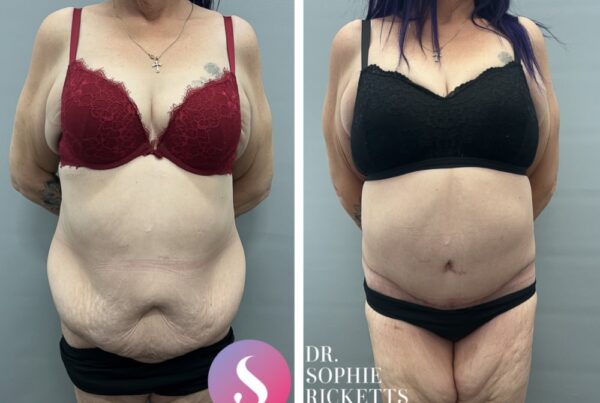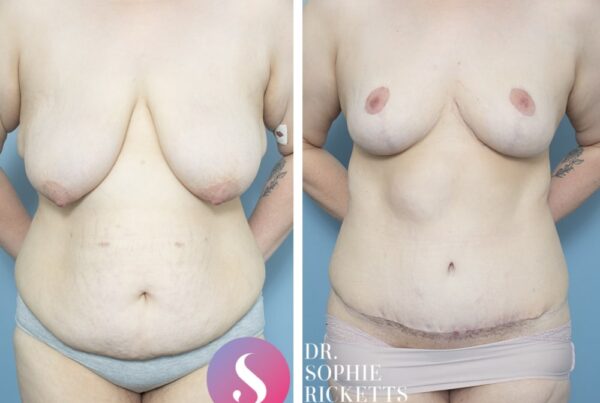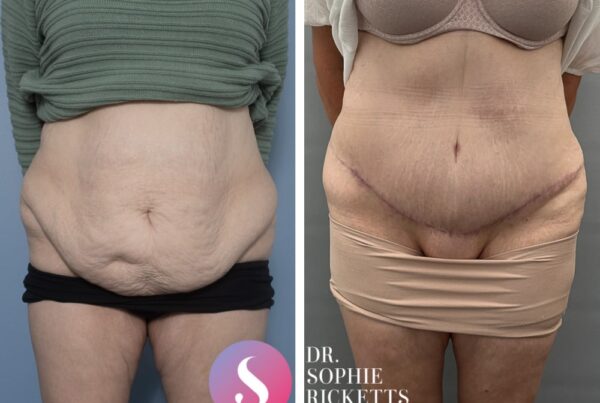Abdominoplasty (Tummy Tuck)
Why might abdominoplasty (tummy tuck) surgery be considered?
Abdominoplasty is a surgical procedure that removes skin and fat from the abdominal area and may also include repair of separated abdominal muscles. Some people consider this procedure following pregnancy, significant weight changes, or other circumstances where the skin and underlying tissues have not returned to their previous position.
Who might consider an abdominoplasty?
- After pregnancy: Skin and muscle in the abdominal area may be stretched, and in some cases the abdominal muscles may separate in the midline. For some people, these changes do not fully resolve after pregnancy and weight loss.
- After significant weight loss: Some people experience skin folds, fat deposits, or muscle changes in the abdominal region after weight reduction. These changes can sometimes cause physical symptoms such as irritation or rashes, and may also affect comfort in clothing or during certain activities.
Can liposuction replace a abdominoplasty (tummy tuck)?
Liposuction removes fat but does not remove skin or repair muscle separation. For this reason, liposuction alone is not an alternative to abdominoplasty where there are significant skin or muscle changes. However, liposuction may sometimes be performed at the same time as abdominoplasty to address fat deposits in specific areas.
What is the recovery process?
Hospital stay is usually one to two nights. Most people are able to manage basic self-care after discharge, but recovery takes time and varies between individuals.
- Activity restrictions: When muscle repair is involved, lifting and strenuous activity are usually limited for several weeks.
- Return to work: This depends on the type of work undertaken. People with desk-based roles may return earlier than those in physically demanding jobs.
- Healing: Swelling, bruising, and tightness in the abdomen are common in the initial weeks and may take several months to fully settle.
Dr Sophie will provide recovery advice tailored to your situation.
FAQ
What is the recovery process like?
The recovery process after an abdominoplasty takes a total of about six weeks. After you leave hospital the first week of recovery is all about taking it easy. Your dressings are all waterproof so you can shower over them. You will be provided with a compression garment to wear which helps to reduce swelling and provide support. You should avoid heavy lifting and strenuous exercise for six weeks but you may be able to return to work, drive and resume light exercise by about the third or fourth week depending on your job. It is important to follow your surgeon’s instructions and attend follow-up appointments for tailored instructions to ensure a successful recovery.
Will there be scarring after abdominoplasty?
Yes, there will be scarring after abdominoplasty, as with any surgical procedure. The extent of scarring can vary depending on the type of abdominoplasty performed (mini, full, extended, circumferential). Typically, the scar will be located along the lower abdomen, from hip to hip as well as around the belly button. The scar will initially appear red but will gradually fade over time. Your plastic surgeon will provide instructions on how to care for your incisions to help minimise scarring, and there are also scar management techniques and products that can further improve the appearance of scars. The good news is an abdominoplasty scar is well hidden below the knicker/bikini line.
Am I a good candidate for abdominoplasty?
You may be a good candidate for abdominoplasty if you have loose or excess abdominal skin, weakened or separated stomach muscles (often due to pregnancy or significant weight loss), and are at a stable, healthy weight. Ideal candidates are non-smokers in good general health, with realistic expectations and personal motivations for surgery. If you’re not planning future pregnancies and are seeking to restore a firmer, flatter abdomen, abdominoplasty may be a suitable option. Dr Sophie Ricketts will assess your individual needs and goals during a thorough consultation to determine if this procedure is right for you.
Will an abdominoplasty help me lose weight?
An abdominoplasty is not intended as a weight-loss method and should not replace a healthy diet or regular exercise. While some weight may be reduced through the removal of excess skin and fat, the main purpose of the procedure is to improve the appearance of the abdomen by tightening muscles and eliminating loose skin. Optimal results are typically seen in individuals who are close to their ideal weight and want to address areas that lifestyle changes alone cannot improve.
Can I have children after an abdominoplasty?
Yes, you can have children after an abdominoplasty; the procedure does not affect your ability to conceive or carry a pregnancy. However, it is generally recommended to wait until you have completed your family before undergoing an abdominoplasty. This is because pregnancy can stretch the abdominal muscles and skin again, potentially undoing the results of the surgery. If you do become pregnant after an abdominoplasty, the safety of the pregnancy is not compromised, but you may require revision surgery to restore your results.
How long do the results of abdominoplasty last?
The outcome of abdominoplasty varies between individuals and is influenced by factors such as skin quality, muscle tone, and changes in weight. Future events, including pregnancy or weight fluctuations, can affect the result over time.
Abdominoplasty does not stop further changes from occurring in the abdominal area. A consultation with Dr Sophie is required to discuss individual circumstances and expectations.
How soon after pregnancy can you get an abdominoplasty?
The timing of surgery after pregnancy varies between individuals. Factors such as overall health, recovery from childbirth, breastfeeding, and weight stability are considered before planning abdominoplasty.
A consultation with Dr Sophie Ricketts is required to assess your circumstances and to discuss when surgery may be appropriate.
What are the risks and complications associated with my procedure?
Like all surgery, an abdominoplasty has potential risks and complications. These complications can be thought of as general or specific. General complications include bleeding, infection, poor wound healing, blood clots in the legs (DVT) and rarely pulmonary embolism. Specific complications include seroma and numbness of the skin below the umbilicus. It’s important to discuss these risks with your surgeon and follow their instructions during recovery to minimise the risk of complications.
Can abdominoplasty be performed at the same time as other surgeries?
In some cases, abdominoplasty may be performed during the same operation as another procedure, such as breast surgery or procedures related to weight loss. The decision to undertake more than one procedure at once depends on individual health, the extent of surgery, and the anticipated recovery.
Whether combining procedures is appropriate can only be determined in a consultation with Dr Sophie. During this consultation, she will review your individual circumstances, explain potential risks, and discuss possible alternatives.
